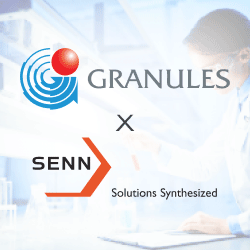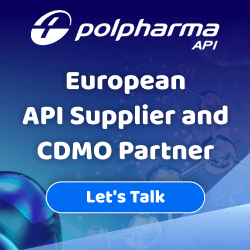Overview of pharmaceutical empty capsules including empty vegetarian hard capsules & empty hard gelatin capsules for oral pharmaceutical applications.
Q1. What are pharmaceutical empty capsules?
Pharmaceutical empty capsules are used for packaging powders, pellets, or tabletted mixtures containing active ingredients that elicit desired therapeutic effects upon administration. This practice extends beyond drug products as empty capsules are the most common option to store herbs and non-pharmaceutical powder preparations, amongst other substances.
Using empty capsules to make homemade supplements is a simple process. Many people use empty capsules to make their own vitamins and herbal concoctions, which can be more cost-effective than purchasing such products from the market.
Empty capsules are made of two distinct parts, a body and a cap. The body is first filled with a mix of active ingredients and excipients and subsequently closed with a cap, using a manual or an automatic press machine.
Depending on the raw materials or ingredients used for making these capsule shells, empty capsules can be classified into two types: (1) hard gelatin or (2) hydroxypropyl methylcellulose (HPMC) capsules. Empty capsules, both gelatin and vegetable capsules (HPMC), are available in a variety of sizes.
Empty Hard Gelatin Capsules:
Hard gelatin capsules (two-piece capsules) are solid dosage forms in which one or more medicinal agents and/or inert materials are enclosed within a hard gelatin capsule shell.
Empty HPMC Capsules:
HPMC capsules are two-piece capsules that serve as vegetarian alternatives to hard gelatin capsules and satisfy certain dietary and cultural needs.
During the manufacturing of empty hard gelatin capsules and empty HPMC capsules, the process of the filling of capsules is called encapsulation. Capsule filling, also known as encapsulation, is a process of enclosing active pharmaceutical ingredients (API) inside empty capsules, allowing them to be taken orally.
It is important to distinguish empty capsule manufacturers from those involved in the filling of capsules (liquid filled or dry filled capsules). While empty capsule manufacturers are involved in the manufacturing of hard gelatin capsule shells or vegetarian capsule shells, suppliers offering encapsulation or filling of hard capsule shells are specialized in inner-fill materials and filling procedures. Empty capsule manufacturers that also offer filling of capsules can function as end-to-end organizations fulfilling all of one's empty capsule requirements under one roof.
Pharmaceutical empty capsules further impart the added benefits of taste and odor masking, making the solid dosage forms more appealing for consumption. And, pharmaceutical empty capsules give consumers the option to combine two or more medicinal ingredients and also enables dosage flexibility. These benefits, amongst copious others, make empty capsules popular for facilitating pharmaceutical drug delivery.
Q2. Who are the leading empty capsule manufacturers in the industry?
There are various empty capsule manufacturers offering empty capsule formulation and manufacturing in the pharmaceutical industry, however, the leading empty capsule manufacturers specializing in empty hard gelatin capsules and empty HPMC capsules are:
Capsugel
Capsugel is a pharmaceutical empty capsules manufacturer that has more than 20 years of experience in hard gelatin capsule manufacturing, amongst other technologies. Capsugel offers a range of specialty capsules, clinical capsules, and empty hard capsules, including empty hard gelatin capsules and hydroxy propyl methyl cellulose (HPMC) capsules for inhalation and oral pharmaceutical applications.
- They offer LICAPS®, an LFHC dosage form,which utilizes a series of cutting-edge advancements in liquid capsule filling, sealing and final product inspection to deliver the high protection and fast release patients and consumers expect.
- Capsugel® Zephyr™ is Lonza’s customizable dry-powder inhalation capsule that is optimized to provide superior performance and compatibility between the capsule/device and capsule/formulation.
- They also manufacture DBCAPS®, capsules that are developed with a tamper-evident design to specifically address the clinical trial challenges of testing without bias.
ACG Worldwide
ACG is the largest pharmaceutical empty capsules manufacturer offering end-to-end manufacturing of hard gelatin capsules, HPMC capsules, and specialty capsules for the pharmaceutical industry. Additionally, customers get all the support they need to select the right method for the filling of pharmaceutical empty capsules, including empty hard gelatin capsule shells and empty HPMC capsule shells.
- Their ACG CAPS™ GI / HI is available in gelatin and hydroxy propyl methyl cellulose (HPMC) capsule shell material options and designed for optimal performance with DPI formulations and various inhalation devices.
- They also offer ACGCAPS GR, specialty capsules and hard gelatin capsules, which can fulfill immediate release needs and are available in 15 sizes.
Qualicaps
Qualicaps®, is a trusted delivery vehicle for products that promote healthcare. Qualicaps’ has the technology and product portfolio to complement the needs of solid dosage form production along with pharmaceutical empty hard capsules and softgel machines.
- Their empty capsule products include Quali-G™, a trusted hard two piece gelatin capsule for oral pharmaceutical applications.
- They also offer Quali-V®-I, a plant-based hypromellose capsule (HPMC veg capsule) developed to respond to the particular functional properties required for use in dry powder inhaler (DPI) devices.
Suheung Capsule
Suheung Capsule has over 30 years of experience in contract HPMC and hard gelatin capsule manufacturing services including empty hard gelatin capsule shell manufacturing for oral pharmaceutical applications. They offer highly stable hard gelatin capsule shell materials for the pharmaceutical industry.
- EMBO CAPS® capsules are manufactured to optimise stability and do not need to be refrigerated in transport. The EMBO CAPS® range incorporates a patented design that maximises capsule performance and function.
Q3. How are pharmaceutical empty capsules classified?
Pharmaceutical empty capsules, as seen above, can be classified on the basis of the outer capsule shell material used, into two types: (1) Empty hard gelatin capsules and (2) Empty HPMC capsules.
(1) Empty Hard Gelatin Capsules
Hard gelatin capsules or two-piece capsules, are solid dosage forms in which one or more medicinal agents and/or inert materials are enclosed within a hard capsule shell, composed of gelatin.
Other than gelatin, hard gels may contain materials such as plasticizers, colourants, water, opacifying agents, and preservatives which either enable capsule formation or improve their performance by facilitating bioavailability enhancement.
Hard gelatin capsules are a modern, solid dosage form for medicinal use, stemming from the increased emphasis on pharmacokinetics found in drug development today. This has considerably expanded the range of possible formulations of hard gelatin capsules as simple dosage forms for oral drug delivery.
Differences between soft and hard gelatin capsules:
While soft and hard gelatin capsules have some similarities, they are two distinct dosage forms. Soft gelatin capsules come in round, oval, tubular, etc. one-piece formulations, whereas hard gels are only available in cylindrical, two-piece capsules.
Soft and hard gelatin capsules, both use plasticizers, coloring agents, sugar, etc. as excipients, but the types and/or amounts that are used vary from one dosage form to another. For example, the ratio of plasticizer to gelatin is higher in softgels as compared to hardgels.
Benefits of Hard Gelatin Capsules:
- Taste & odor masking
- Ease of administration
- Portability
- Rapid drug action
- Flexibility of formulation of hard gelatin capsule
- Barrier to oxidation
- Solubility enhancement of poorly soluble drug substances
(2) Hydroxypropyl Methylcellulose Capsules or HPMC (Vegetarian) Capsules
While animal bones and hides are conventionally used for the formulation and manufacturing of hard gelatin capsules, now there is a vegetable capsule alternative called HPMC (vegetarian) capsules. These empty shells are filled with active pharmaceutical ingredients in dry form or liquid form. If it is filled with powder, then it is called a dry filled capsule and if it is filled with liquid or semi-solid, it may be called a liquid filled capsule.
Vegetarian capsules which are produced from cellulose are called hydroxypropyl methylcellulose capsules. HPMC veg capsules (vegetarian capsules) are made of natural polymers and fibers and may be referred to as polymer capsules. These polymer capsules may also function as time-delayed release capsules because they have the ability to delay drug release from the capsule shell.
Furthermore, these HPMC veg capsules (hypromellose capsules) are attractive, all natural solid dosage forms that retain all the advantages of hard gel capsules; they are easy to swallow, effectively mask taste and odor, and allow product visibility.
Hydroxy propyl methyl cellulose (HPMC) has thus become a successful alternative material for two-piece, hard gelatin capsules and is used for supplements either as liquid filled or dry filled capsules, all over the world. Owing to their low-moisture content, these HPMC (vegetarian) capsules or vegetable capsules offer a significant advantage over other solid dosage forms.
Future refinements in the production and filling of HPMC capsule shells (hypromellose capsules) and improvement in their in vivo/in vitro dissolution would ensure their superiority over hard gelatin capsules.
Benefits of HPMC Capsules:
- Easy digestion
- Increased bioavailability
- Reduced cost
- Decreased crosslinking reaction
- Optimization of encapsulation & packaging
- Free of preservatives (all natural)
- Wider customer base
Q4. What are the different components of empty hard gelatin and empty HPMC capsules?
Components used in hard gelatin capsule shell manufacturing:
1. Gelatin (E.g. Type A & Type B)
Gelatin is an animal protein made by boiling the collagenous material from animal bones, hides, and skin. Depending on its source, gelatin can be divided into two types; Type A, from acidic hydrolysis of animal skin, and Type B, from basic hydrolysis of bovine bones.
Gelatin is one of the most crucial hard gelatin capsule ingredients and can only be used once it has been approved by regulatory authorities. Furthermore, approval is only granted when it satisfies minimum specifications relating to gel strength, viscosity, particle size distribution, etc.
2. Preservatives (E.g. Propyl & Methyl Parabens)
These agents are used for filling hard capsule shells, which make hard gelatin capsules safe for consumption and increases their shelf life.
Components used in HPMC capsule shell manufacturing:
1. Hydroxypropyl methylcellulose (HPMC) or hypromellose
HPMC is a wood pulp derived from softwood tree species including Pine and Spruce. Hydroxypropyl methylcellulose (HPMC) belongs to the group of cellulose ethers in which hydroxyl groups have been substituted with one or more of the three hydroxyl groups present in the cellulose ring.
Hypromellose is a solid, and is a slightly off-white to beige powder in appearance, which forms colloids when dissolved in water. This non-toxic ingredient is combustible and can react vigorously with oxidizing agents.
HPMC is a hydrophilic (water soluble), biodegradable, and biocompatible polymer having a wide range of applications in drug delivery, dyes, paints, cosmetics, adhesives, coatings, agriculture, and textiles.
Some components used in both empty HPMC & empty hard gelatin capsule shell manufacturing include, but are not limited to:
1. Plasticizer (E.g. Sorbitol, glycerin, etc.)
Plasticizers are added to capsule shells to reduce the rigidity of the polymer and make it more pliable. The ratio of plasticizer and gelatin is lower in hard gelatin capsules, approximately 0.4 : 1.
2. Water
Varies depending on storage conditions.
3. Opacifiers (E.g. Tio2)
They provide protection against light and photodegradation. They also play a role in concealing the contents used in the filling of capsule shells.
4. Colorants (E.g. Dye, Lakes, Mineral Colors, etc.)
Coloring agents can impart various colors to hard gelatin capsules. Colorants play an important role in improving patient compliance and can be further selected to complement the disease being treated.
All Suppliers


















